Bill Nye Book List
Here are your choices:
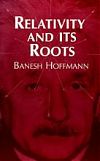
Relativity and Its Roots
by Banesh Hoffmann
Using simple examples from everyday life, an Einstein scholar offers entertaining, nontechnical demonstrations of the meaning of relativity theory. Starting with the geometrical and cosmological ideas of the ancient Greeks, he traces the theory’s development from its basis in work by Kepler, Galileo, Newton, Faraday, Maxwell, and others.
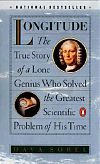
Longitude: The True Story of a Lone Genius Who Solved the Greatest Scientific Problem of His Time
by Dava Sobel
During the great ages of exploration, “the longitude problem” was the gravest of all scientific challenges. Lacking the ability to determine their longitude, sailors were literally lost at sea as soon as they lost sight of land. Ships ran aground on rocky shores; those traveling well-known routes were easy prey to pirates. In 1714, England’s Parliament offered a huge reward to anyone whose method of measuring longitude could be proven successful. The scientific establishment—from Galileo to Sir Isaac Newton—had mapped the heavens in its certainty of a celestial answer. In stark contrast, one man, John Harrison, dared to imagine a mechanical solution—a clock that would keep precise time at sea, something no clock had been able to do on land. And the race was on….
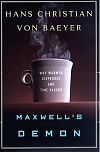
Maxwell's Demon: Why Warmth Disperses and Time Passes
by Hans Christian Von Baeyer
Why do warm things always cool? Because of the second law of thermodynamics, stating that heat disperses or, if you will, that entropy increases. Increasing entropy, by the way, is statistically expressed as increasing probability, which is to say increasing event randomness. Meanwhile, thanks to Einstein, we know that cooling is really conversion of energy to mass. All these expressions, it turns out, are equivalent to saying that time goes by. And we learned all this because of the creature of von Baeyer’s title, invented by physicist James Clerk Maxwell (1831-79) to test the second law by defying it. That creature, that demon, keeps a gate between two gas-filled boxes, one warmer than the other; flouting the second law, he sends warm molecules from the cooler box into the warmer but prevents warm molecules from the warmer from entering the cooler. Several brilliant minds have advanced science by squelching the demon and reasserting the second law. Their stories and those of the earlier discoverers and formulators of the laws of thermodynamics make riveting reading.

The Einstein Paradox: And Other Science Mysteries Solved by Sherlock Holmes
by Colin Bruce
Readers are introduced to the bizarre concepts of modern physics as the only way to solve a casebook of otherwise impossibly paradoxical crimes. “What better way to explain to nonscientists the sometimes mystifying world of modern physics than by enlisting the aid of that master demystifier, Sherlock Holmes?”

The Whole Shebang : A State of the Universe(s) Report
by Timothy Ferris
Plenty of books try to explain the origin of the universe, but despite the ascendance of the Big Bang theory, numerous details of that theory remain in flux as new observations are made and new hypotheses formed (and then confirmed or rejected). Timothy Ferris’s The Whole Shebang is an up-to-date account of the various mechanisms believed to have contributed to the universe as we now know it, from the Big Bang itself to inflation to superstrings. The Whole Shebang eschews mathematics and formulae and explains cosmological concepts in clear and enticing prose. If you need an update on the state of the universe, you’ll find it here.
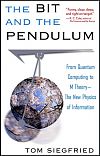
The Bit and the Pendulum: : How the New Physics of Information Is Revolutionizing Science
by Tom Siegfried
Everything in the universe, from the molecules in our bodies to the heart of a black hole, is made up of bits of information. This is the radical idea at the center of the new physics of information, and it is leading to exciting breakthroughs in a vast range of science, including the invention of a new kind of quantum computer, millions of times faster than any computer today. Acclaimed science writer Tom Siegfried offers a lively introduction to the leading scientists and ideas responsible for this exciting new scientific paradigm.

A Mathematician Reads the Newspaper
by John Allen Paulos
With the same user-friendly, quirky, and perceptive approach that made Innumeracy a bestseller, John Allen Paulos travels though the pages of the daily newspaper showing how math and numbers are a key element in many of the articles we read every day. From the Senate, SATs, and sex, to crime, celebrities, and cults, he takes stories that may not seem to involve mathematics at all and demonstrates how a lack of mathematical knowledge can hinder our understanding of them.
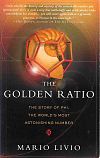
The Golden Ratio: The Story of PHI, the World's Most Astonishing Number
by Mario Livio
Throughout history, thinkers from mathematicians to theologians have pondered the mysterious relationship between numbers and the nature of reality. In this fascinating book, Mario Livio tells the tale of a number at the heart of that mystery: phi, or 1.6180339887…This curious mathematical relationship, widely known as “The Golden Ratio,” was discovered by Euclid more than two thousand years ago because of its crucial role in the construction of the pentagram, to which magical properties had been attributed. Since then it has shown a propensity to appear in the most astonishing variety of places, from mollusk shells, sunflower florets, and rose petals to the shape of the galaxy. Psychological studies have investigated whether the Golden Ratio is the most aesthetically pleasing proportion extant, and it has been asserted that the creators of the Pyramids and the Parthenon employed it. It has even been found to be connected to the behavior of the stock market!

A History of Pi
by Petr Beckmann
The history of pi, says the author, though a small part of the history of mathematics, is nevertheless a mirror of the history of man. Petr Beckmann holds up this mirror, giving the background of the times when pi made progress — and also when it did not, because science was being stifled by militarism or religious fanaticism.

Zero: The Biography of a Dangerous Idea
by Charles Seife
Charles Seife traces the origins and colorful history of the number zero from Aristotle to superstring theory by way of Pythagoras, the Kabbalists, and Einstein. Weaving together ancient dramas and state-of-the-art science, Zero is a concise tour of a universe of ideas bound up in the simple notion of nothingness.
Posted by Justin Wells : 01/06/2008